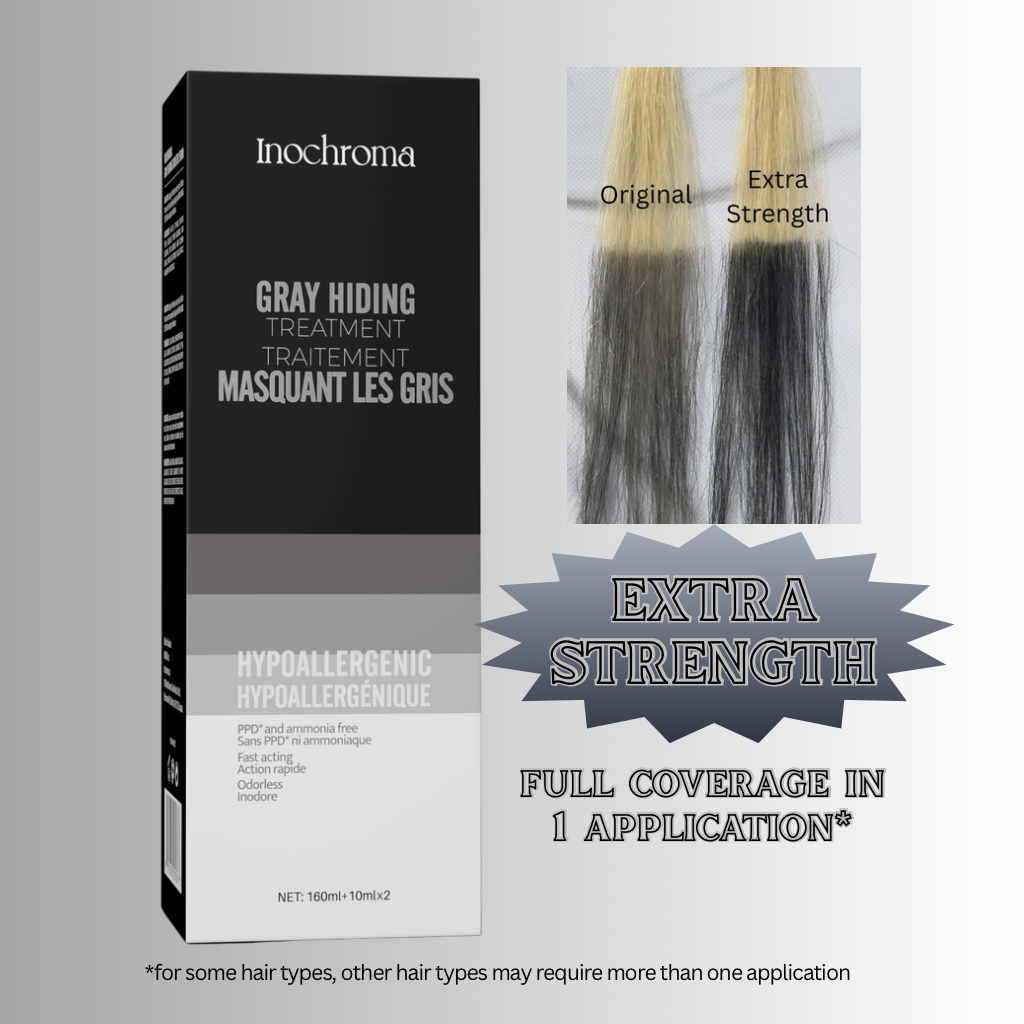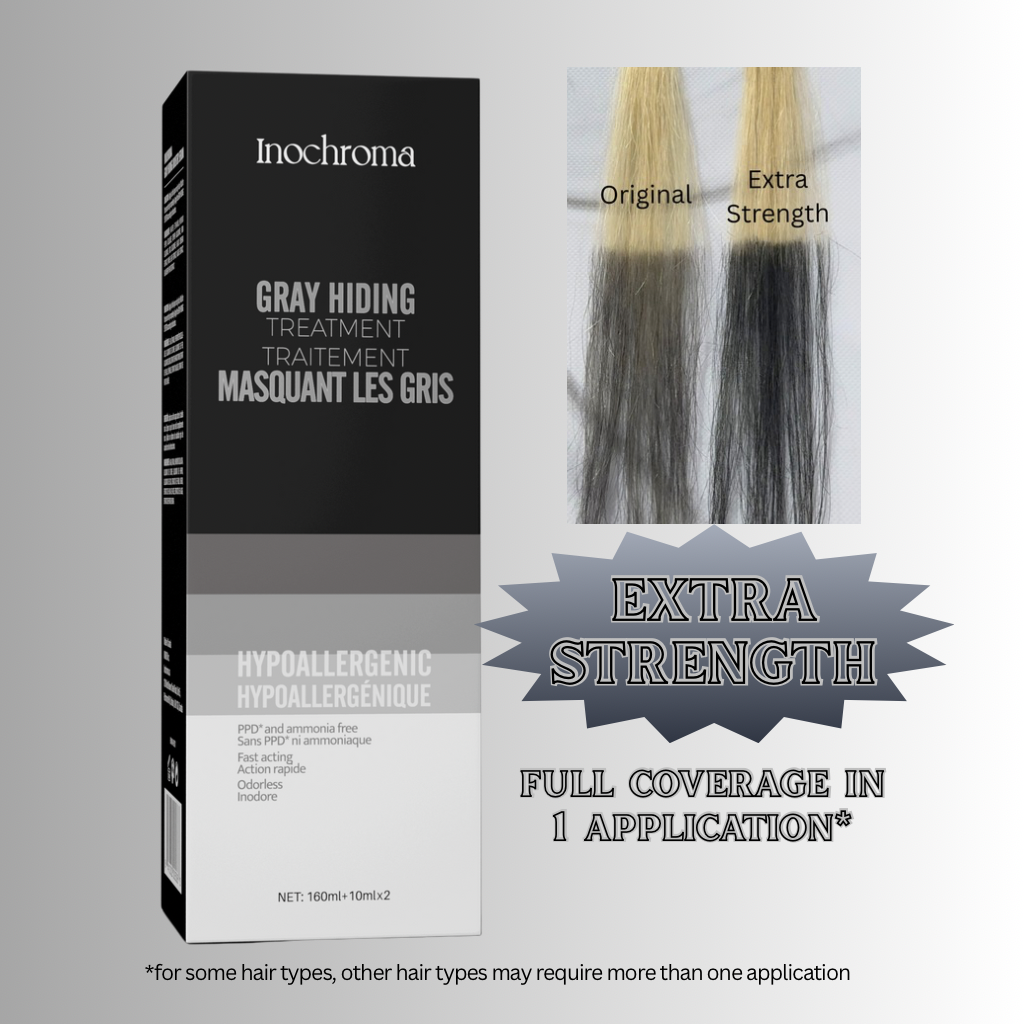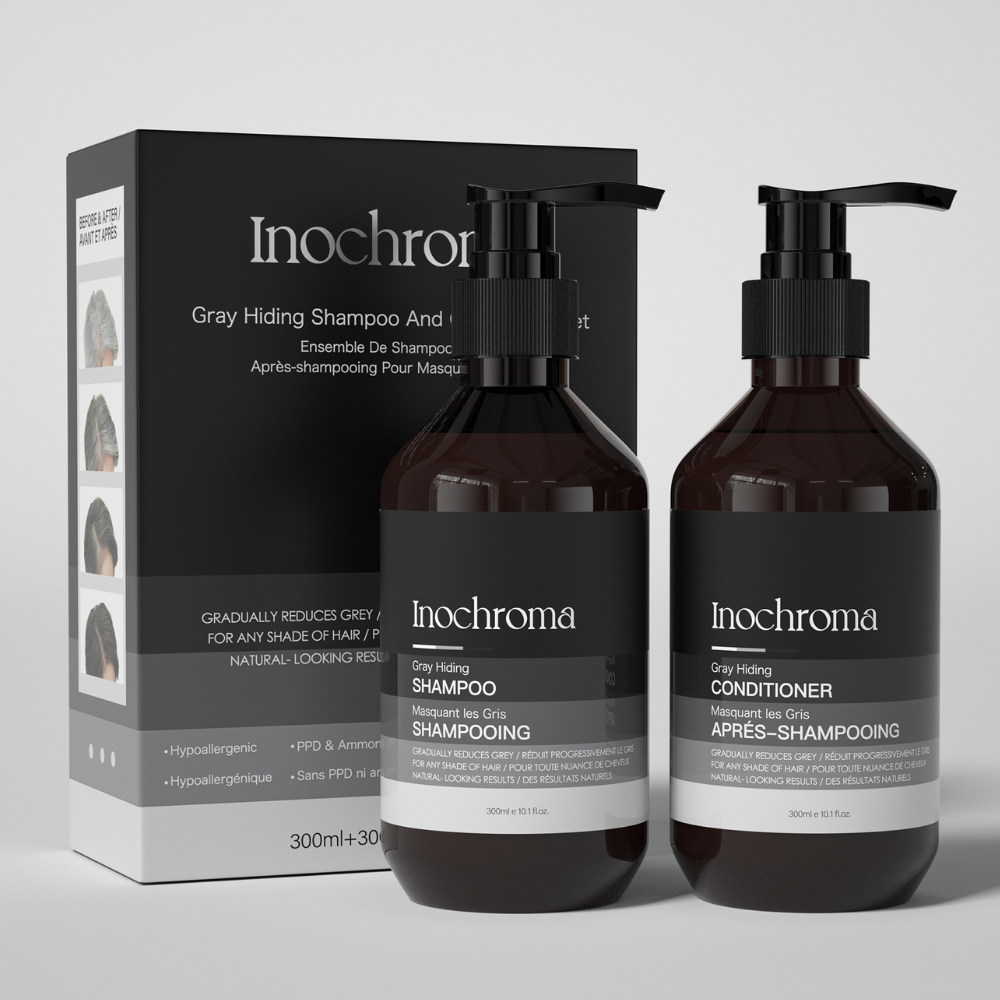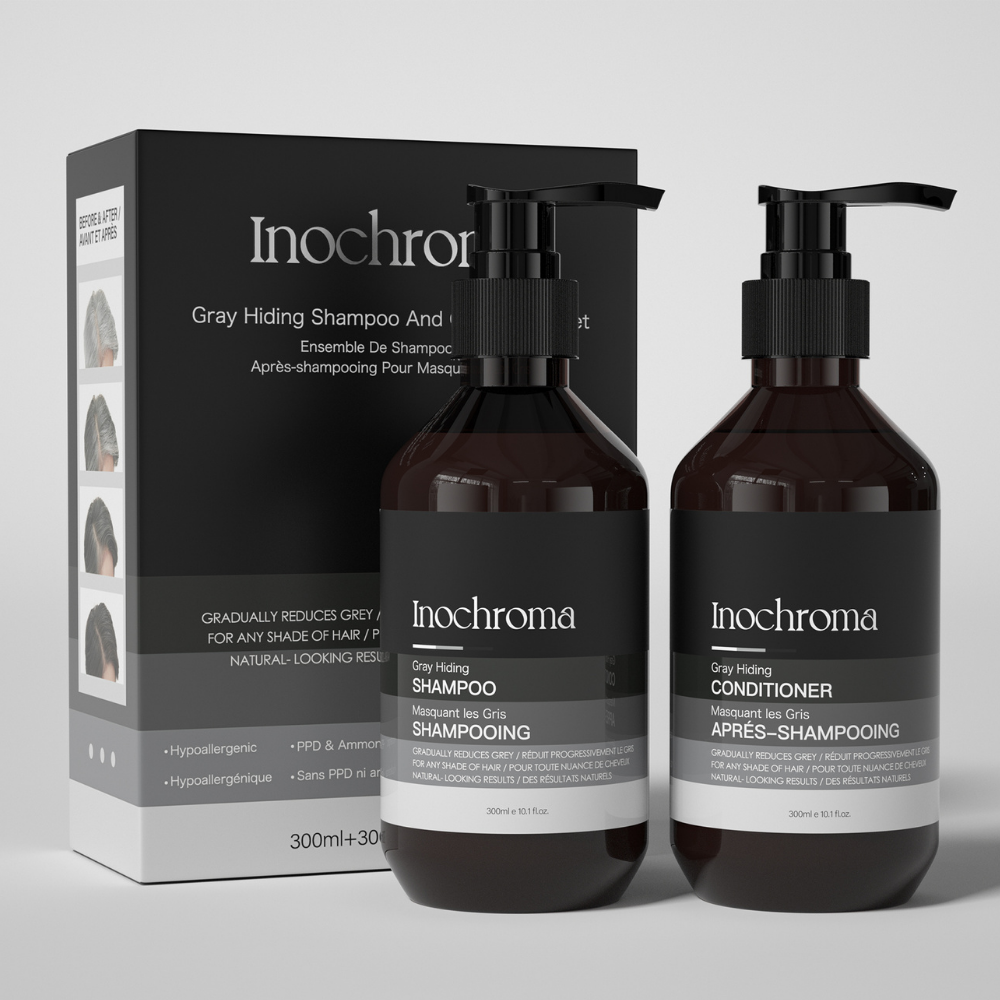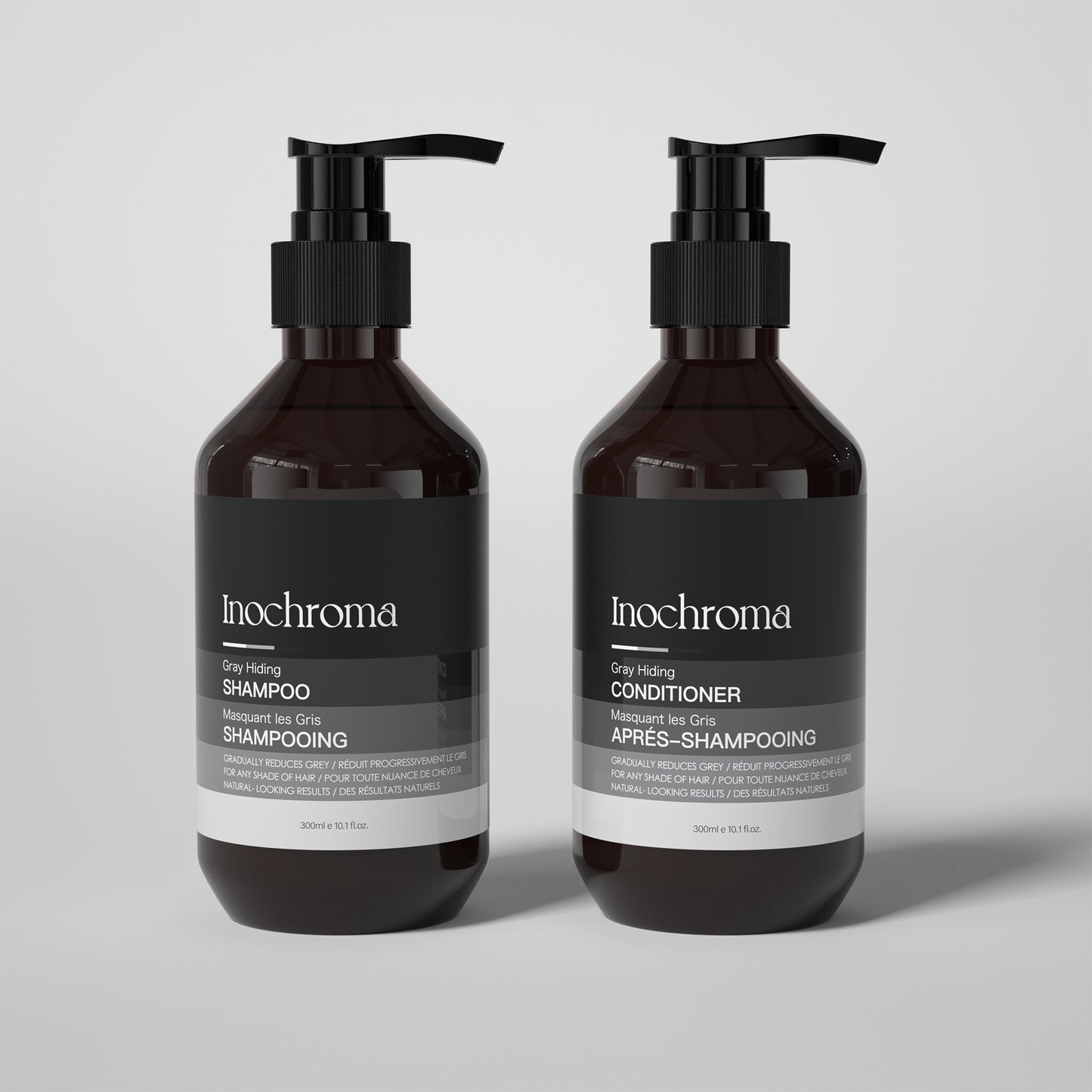Hair Dye for Sensitive Scalp: PPD-Free, No-Mix Grey Coverage Guide
If hair color usually stings or leaves your scalp itchy, you’re not alone. Many people react to common dye ingredients or strong developer smells—even when they only want to make grey strands less obvious. This guide explains a gentler path: PPD-free, no-mix grey coverage designed to blend the visible greys while keeping your hair’s natural highs and lows.
Always patch-test 24 hours before coloring—safety first.
Contents
- Why sensitive scalps react
- Grey “coverage” vs. grey “hiding”
- What “no-mix” means—and why it helps
- Choosing a shade (including natural black)
- How to apply for comfort
- Is PPD-free always safer?
- No-mix grey coverage on a busy schedule
- FAQ
Why sensitive scalps react
- PPD and related dye bases used in permanent color
- Ammonia (or strong alkalizers) that raise hair cuticles
- Fragrance/solvents that can irritate reactive skin
If you’ve ever felt burning, tightness, or persistent itchiness after coloring, switch to milder formats and avoid all-over permanent dyes until you’ve tested tolerance.
Grey “coverage” vs. grey “hiding” (blending)
Traditional coverage aims for uniform color root-to-tip. It looks great, but it often requires stronger chemistry and full-head processing.
Grey hiding (blending) takes a different approach: tint only the visible greys so they merge with your base color. The result is softer, natural-looking hair with less chemical load and quicker touch-ups—ideal for sensitive scalps.
Want a product built for this job? See Grey Hiding Treatment (PPD-free, ammonia-free, no-mix).
What “no-mix” means—and why it helps
No-mix formulas are ready straight from the bottle. There’s no developer to measure and fewer reactive steps on your scalp, which often means lower odor and shorter exposure. For sensitive users, that’s a meaningful difference.
Choosing a shade (including natural black hair)
- If your base is dark brown to black, choose a shade that softens greys without over-darkening surrounding hair. Natural-looking black from a no-mix format keeps contrast low and avoids the “too-flat” look.
- If your base is medium to light, pick a tone that matches the depth, not the exact hue. Warm vs. cool is personal—test on a small section.
Quick rule: when in doubt, start a half-shade lighter. You can always re-apply on the same greys to deepen blend.
How to apply for the most comfortable experience
- Patch-test behind the ear/inner arm and wait 24 hours.
- Work on dry, detangled hair. Target only the areas where greys are most visible (temples, parting, hairline).
- Apply thin, even layers; comb through just the grey clusters so surrounding hair keeps its natural tone.
- Short processing is usually enough for blending. Rinse thoroughly with lukewarm water.
- Moisturize the scalp after rinsing (fragrance-free, lightweight).
- Reapply whenever new greys show—most people refresh every 2–4 washes.
Is PPD-free always safer?
“Safer” depends on your sensitivities. PPD-free and ammonia-free formulas are gentler by design, but always read the full INCI list and patch-test. If you’ve had severe reactions before, consult a professional and keep first applications short.
No-mix grey coverage on a busy schedule
- 5–10 minutes on just the visible greys often makes the biggest impact.
- Keep a travel-size bottle for quick trips and last-minute touch-ups.
- Photograph your hair in daylight after each application—this helps you track shade depth and spacing for consistent results.
Frequently asked questions
How long does no-mix grey coverage last?
Most users see natural blending for 2–4 washes. Because only the grey strands are tinted, your hair keeps dimension instead of going one flat color.
Will it work on very resistant greys?
Yes, but you may need a second short pass on the same strands. Hold time low; comfort first.
Can I use it with other styling products?
Yes—avoid heavy oils on the same day (they can block uptake). Light leave-ins after rinsing are fine.
Where to start: Grey Hiding Treatment · Grey-care collection · Sensitive to hair dye?


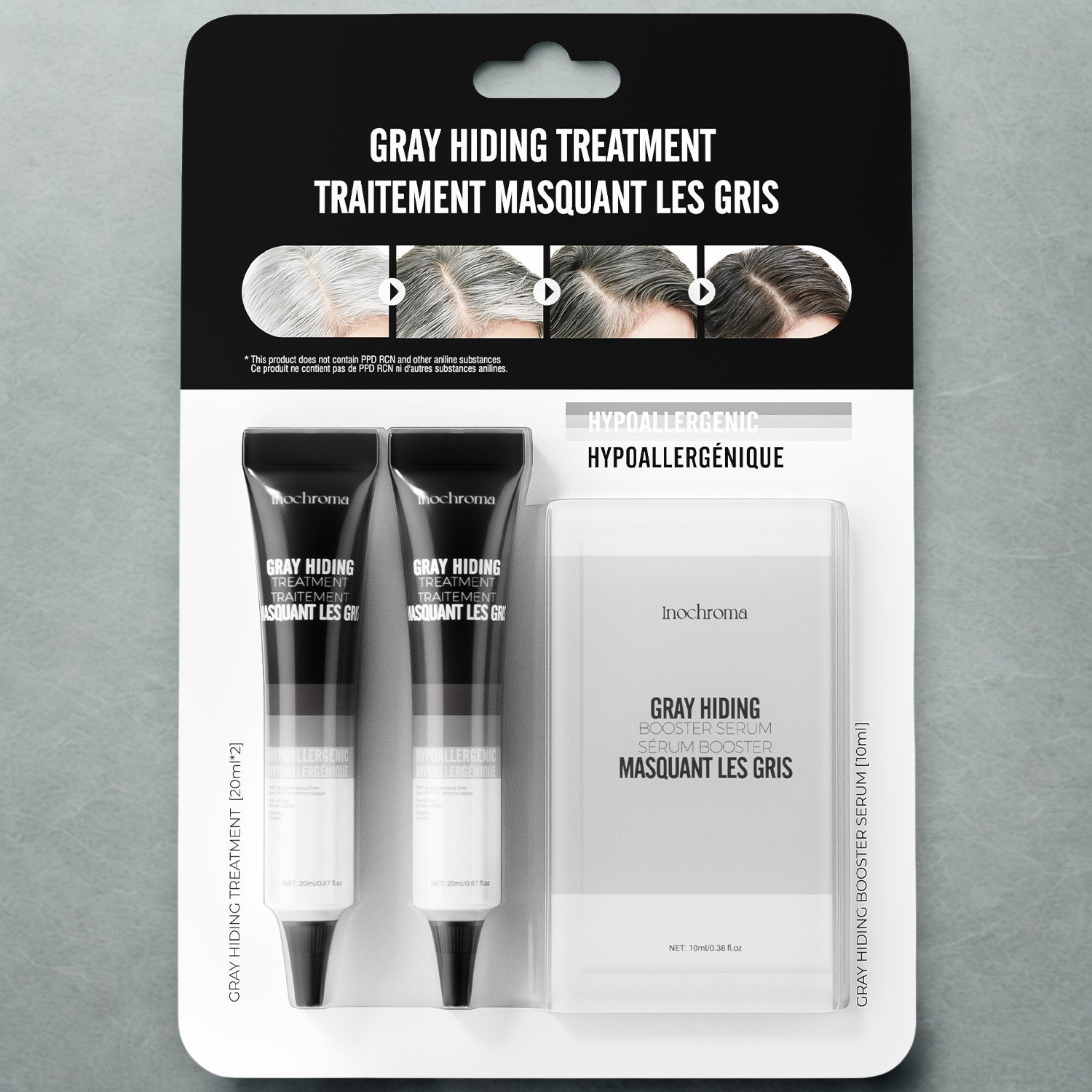


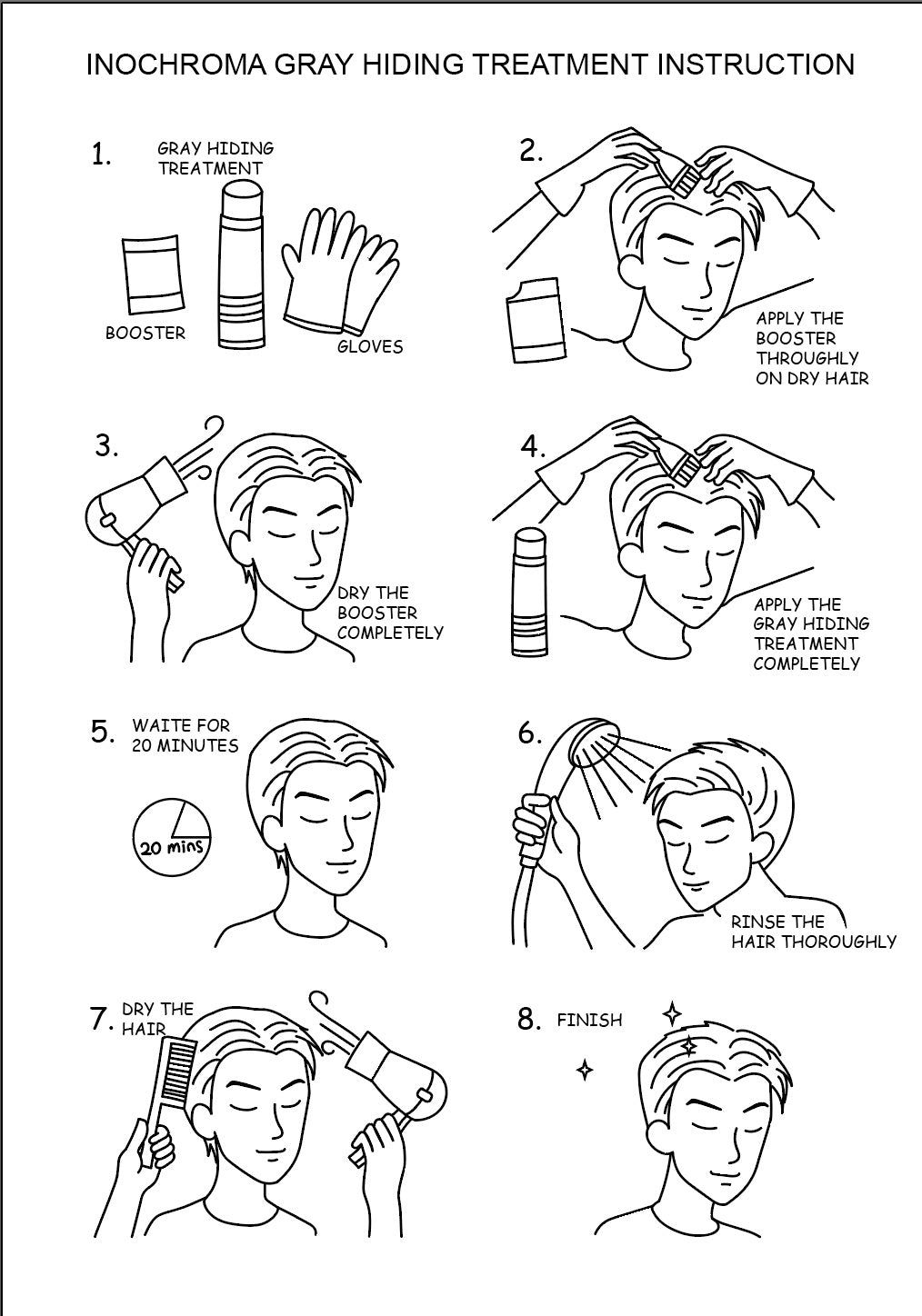
![Tratamiento para ocultar canas Inochroma [Tamaño de prueba]](http://inochroma.ca/cdn/shop/files/Before_1_use_2_use.png?v=1762616719&width=1445)


